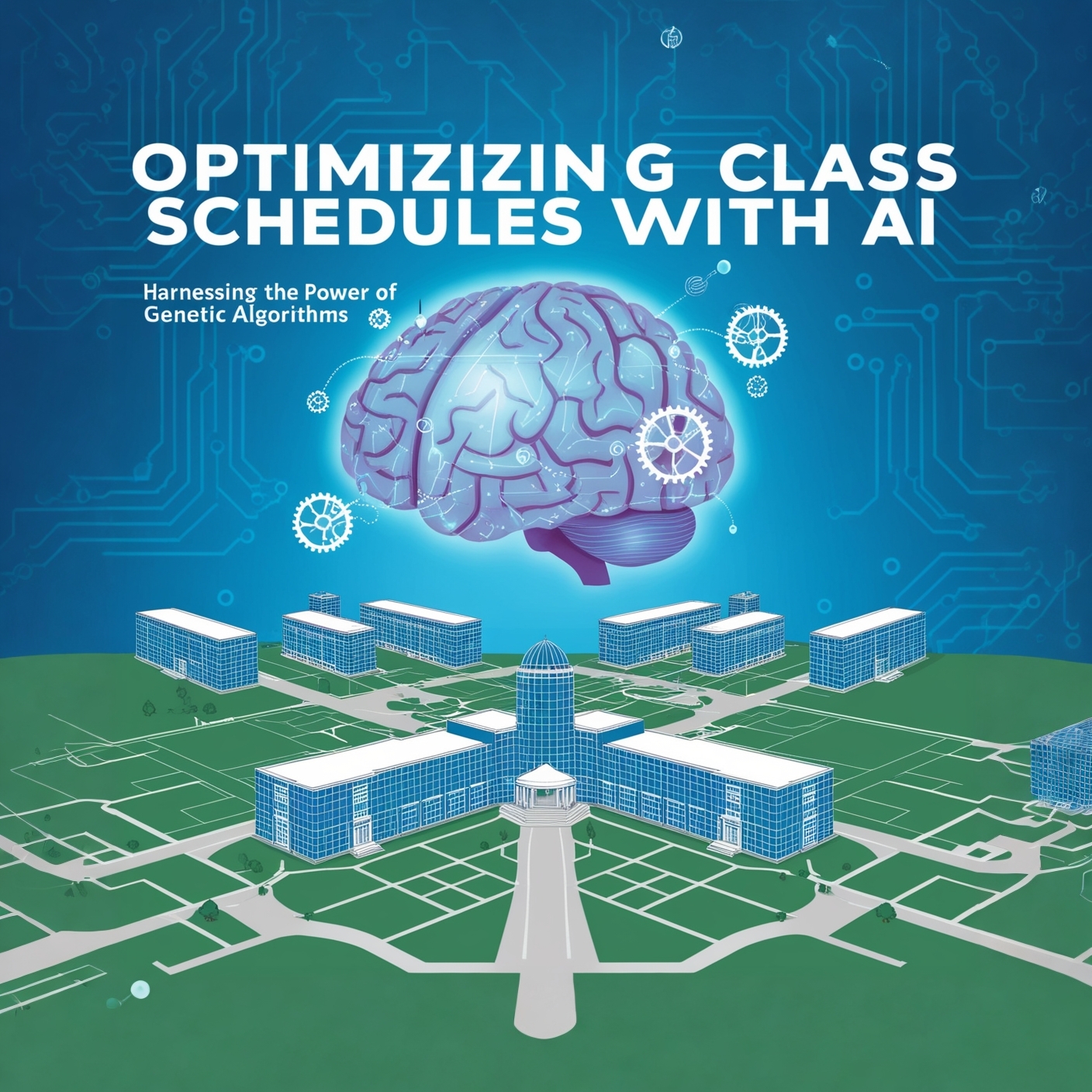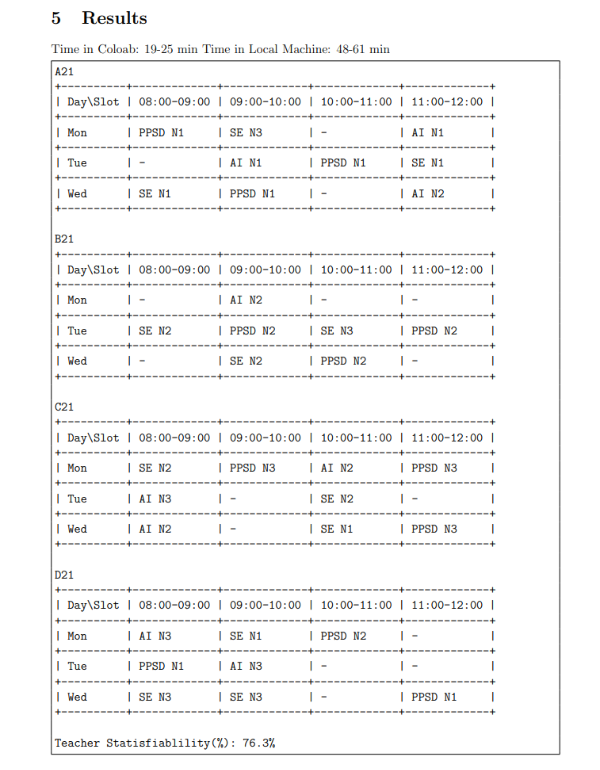Genetic Algorithm

Scheduling of classes using Genetic Algorithm with constraint satisfaction.
Tech Stack
- Python
- Genetic Algorithm
- Scikit Learn
- Pandas
Role
- AI Engineer -
Description
This project leverages genetic algorithms to tackle the complex problem of class scheduling in educational institutions. Traditional scheduling methods often fall short when accommodating the diverse preferences of teachers, student needs, and institutional constraints. By employing genetic algorithms, the project automates the scheduling process, allowing for more efficient allocation of resources and time. This approach mimics natural selection, generating multiple scheduling options and iteratively refining them based on defined criteria such as teacher availability, course requirements, and student preferences.
The implementation involves defining a population of potential schedules, each represented as a set of chromosomes that encode the assignment of classes to time slots. Various genetic operators—such as selection, crossover, and mutation—are utilized to create new generations of schedules. Through iterative evaluation and adaptation, the algorithm converges toward optimal solutions that minimize conflicts and maximize teacher satisfaction. This not only streamlines the scheduling process but also empowers institutions to respond dynamically to changes, such as unexpected faculty absences or shifts in course demand.
The results of this project hold significant implications for enhancing the academic experience for both students and teachers. By providing an automated solution that prioritizes teacher preferences while adhering to institutional guidelines, the genetic algorithm facilitates a smoother and more equitable scheduling process. Moreover, this approach can be adapted to various educational contexts, enabling institutions to optimize their class schedules while maintaining flexibility and responsiveness to real-time challenges. Ultimately, this project aims to set a new standard in educational administration, demonstrating the powerful intersection of artificial intelligence and organizational efficiency.
Use Cases
1
Automating class scheduling for educational institutions, reducing manual effort and potential errors.
2
Enhancing resource allocation by optimizing the assignment of classrooms and time slots based on availability.
3
Providing a flexible scheduling solution that can adapt to changing circumstances, such as unexpected teacher absences or new course offerings.
4
Implementing personalized scheduling for students, ensuring their course preferences are prioritized within institutional constraints.

